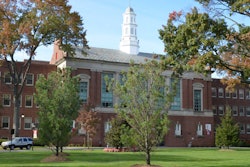Every day, it seems — and rightly so — there are new calls to strengthen and diversify the science, technology, engineering and mathematics (STEM) pipeline by leaders from across the political spectrum. The education community knows this cause well. As many researchers will tell you, interest in STEM majors and careers by underrepresented students is not the issue. It’s what happens along the way to a STEM degree that poses a problem to the majority of students who start down this path.
According to UCLA’s Higher Education Research Institute, of all Black, Native American, and Hispanic students who aspire to a STEM degree in their first college year, just 19 percent, 20 percent and 22 percent, respectively graduate from a STEM department.
There is wide agreement that students who leave STEM will disproportionately do so in the first two college years. Hence, the growth of activities to support students and stem this tide of attrition — chief among them being bridge programs, cohort learning models and intensive advising in the freshman and sophomore years.
Although these solutions have had some success and are supported in the research literature, in reality they often operate at the margins, are supported by non-permanent funds and are deemed by many on campus as “add-ons” for distinct student populations. They are most often attempts to augment or tweak the system by trying to change student behavior, instead of the more obvious need to change the system itself.
This is not to say that we do away with bridge programs and intensive advising — such efforts are important and certainly successful on many campuses. But there is a greater and more permanent need to fundamentally transform teaching in the STEM classroom.
Changing the System to Strengthen STEM Education
If we are to build a great STEM workforce — a clear and articulated national need — then change at the margins is no longer acceptable. Higher education must instead transform itself from the inside out. It is imperative that colleges and universities move beyond what some have called the “culture of attrition” that represents the first two years of STEM coursework.
Of course, there are many reasons that students choose to leave STEM, including simple preference for another discipline and the desire to pursue newfound interests once in college. However, students leave just as often to pursue majors they deem more relevant to their everyday lives, provide a tangible avenue to give back to their communities, are more aligned with their K-12 preparation, and are friendlier, more tolerant and more accepting of difference.
All but these first two reasons can be addressed if STEM departments take the much needed step of transforming education in the first two years — a time when students disproportionately report that classes are rigid, impersonal, competitive and irrelevant to their everyday lives.
Students also say that the first two years are frankly too hard. But as innovative faculty and practitioners know, STEM courses wouldn’t be perceived this way if departments placed students first; thus meeting students where they are academically and working from a talent development model instead of one that seeks to weed students out.
The solutions are at the ready and they have empirical support, including cohort models at the department or classroom level; small-group and project-based learning; pedagogy that ties scientific concepts to real-world applications; and, perhaps most importantly, a faculty body that is willing to change.
There is serious ground to cover. As part of their Facts of Science Education series (annual public opinion research that began in 1995), the Bayer Corporation commissioned a survey that focused on the viewpoints of STEM department leaders at America’s top 200 research institutions as well as top producers of female, Black, Native American and Hispanic STEM graduates.
According to the report’s authors, “Despite acknowledging the negative impact rigorous introductory STEM courses have on [underrepresented minority (URM)] STEM undergraduates, a majority (57 percent) do not see a need to significantly change their introductory course instructional methods in order to retain more STEM students, including women and URMs.” Nonetheless, the commitment to diversifying STEM departments was reported, including the need for support by top administration and faculty.
Aligning Awards With Outcomes
So, how do we get from point A (believing in change) to point B (achieving change)? We must change the system or, perhaps more to the point, change its reward structure.
Until teaching and learning are on par with research and publishing productivity, attempts to change learning by continually adapting to a flawed system will only take us so far. If the system at large doesn’t name the issues and address them head on, we will continue to see only very modest increases in STEM degree production in the United States — and most certainly not the increases that policymakers have been calling for.
Teaching and learning must become an institutional priority with commensurate support and rewards. That means financially strengthened centers for teaching and learning, as well as rewards to individual faculty members for innovative teaching as evidenced by student learning outcomes.
Finally, federal and state governments can do more than offer broad measures of accountability and reinforce the rhetoric for more STEM degrees. They have at their disposal another avenue to strengthen teaching at the institutional level: build teaching and learning measures into research grants. Again, we must reward good behavior and come equipped with resources to help institutions strengthen their capacity for improvement.
I reject the notion that decreased budgets cannot accommodate for a new emphasis on learning. If we don’t invest now, then when? How many more years must go by before we take the problem of attrition and slowed degree production seriously? When do we start putting our collective problem solving abilities to work? True transformation is no longer a luxury. It is a necessity.
Dr. Lorelle L. Espinosa, Senior Analyst at Abt Associates, writes about the national imperative of building and sustaining a diverse STEM pipeline.
The views expressed are those of the author and should not be attributed to Abt Associates.


















